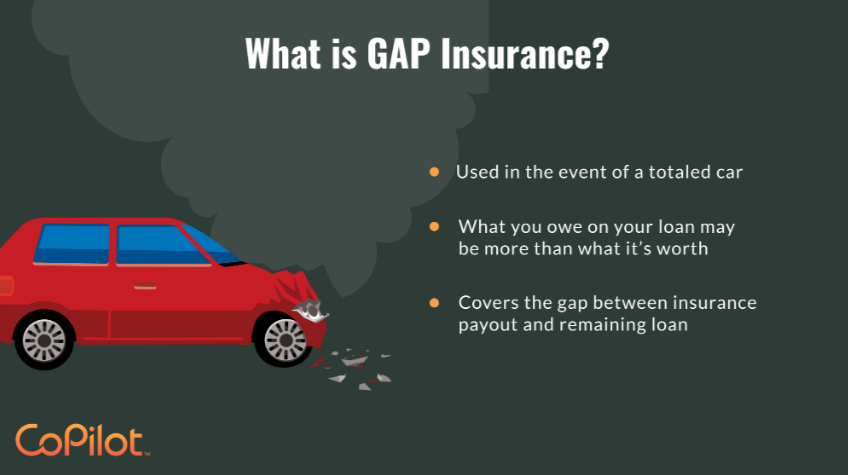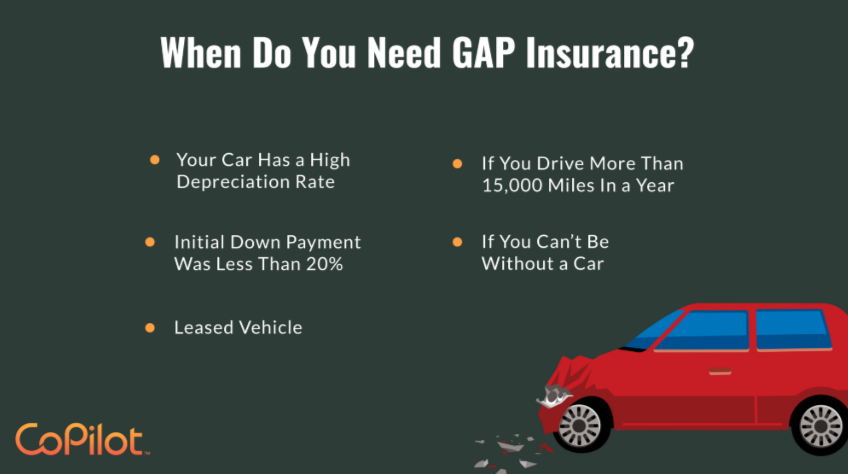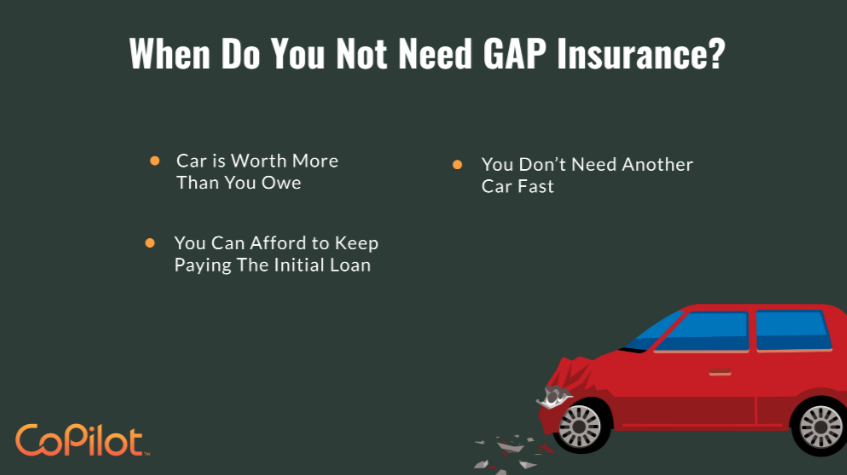What is Gap Insurance and is it Worth it?

Dealing with insurance companies is never fun. There’s frequently a lot of red tape that must be navigated in order to receive a payout, and sometimes you get back less money than what the car is actually worth.
That’s where gap insurance comes into play. If you total your car and owe more money on the car than your insurance company pays out, gap insurance will cover the difference.
For instance, if you still owe $20 grand on your car, total it, and your insurance company only pays out $15 grand, you’d typically be stuck owing the $5,000 difference. Gap insurance would pay that $5,000 difference, protecting you from having to pay for a car you can no longer drive.
But is gap insurance a wise purchase? That depends on what car you drive and how much you owe on it. We break down gap insurance in the simplest terms possible and show you examples of how it works below.

What is gap insurance?
Before we go into whether or not gap insurance is truly necessary, we should first touch on what it is.
In the event of a total loss, gap insurance covers the gap between what your insurance company will pay out and the amount of money you owe on the car loan.
In the simplest possible terms, gap insurance protects you from having to make payments on a totalled car.
DOWNLOAD THE APP
The CoPilot app is the smartest way to buy a car. Search all listings in your area, get notified about deals, new listings, and price drops, or chat with one of our copilots for some hands-on advice.
A simple example of what gap insurance does
Let’s say that you still owe $10,000 on your car and get in a severe accident. Your insurance values your vehicle at $5,000 - only half of what you still owe. This means you’ll end up owing the remaining $5,000 to your financing company, and may have to continue making payments on a car that was totalled.
Gap insurance would pay out the remaining $5,000 to cover the cost of the vehicle loan, so the owner isn’t stuck making payments on a totalled vehicle.
Without gap insurance:
Total amount owed on vehicle: $10,000
Amount paid by insurance: $5,000
Amount owed by vehicle owner: $5,000
With gap insurance:
Total amount owed on vehicle: $10,000
Amount paid by insurance: $5,000
Amount paid by gap insurance: $5,000
Amount owed by vehicle owner: $0
Who needs gap insurance, and who doesn’t?
When financing a car, it’s unlikely that your vehicle’s value will be greater than the amount of financing over the life of the loan. While your loan balance decreases by the same amount each month, your vehicle value won’t stay in lockstep with what you owe on it.
It’s possible to become “upside down” on a vehicle, where you owe more on the loan than the vehicle is worth. Gap insurance protects you from having to pay the difference between what the car is worth and what you owe for it.
If you’re buying a vehicle with a high depreciation rate, or are otherwise expecting the value of the vehicle to be lower than the balance of your loan, gap insurance is probably a great idea. If you’re driving an older vehicle or are certain that your vehicle will be worth roughly what is owed, you probably don’t need gap insurance.
If you drive a newer or more expensive vehicle, or owe a lot on your vehicle, gap insurance is a good idea. If you’re driving an older or less expensive vehicle, or have mostly paid off your loan balance, you don’t need gap insurance as much.

Is gap insurance worth it?
That depends entirely on what car you drive.
If you’re financing a car with a high depreciation rate, gap insurance would be helpful. Most luxury vehicles and electric vehicles see plummeting value after the first few years.
Consider gap insurance if your initial down payment on the vehicle was less than 20% of the car’s value. Usually, that means you’ll wind up owing the lender more than your car is worth.
Also consider gap insurance if you’re leasing a vehicle. There is typically a large discrepancy in the event of a leasing accident, so you’ll want to be covered accordingly. However, be sure to check your lease agreement. Sometimes the leasing company will include gap coverage in the initial contract.
If you drive more than 15,000 miles annually, gap insurance is a good idea. The more you drive your car, the more the value depreciates. If you’re putting a ton of miles on it, you’re going to want an extra safety net.
If you are a single-car family and cannot afford to be without a car for any period, you’re going to want gap insurance. In the event of a major accident, you might not be able to buy a new car right away because you still owe thousands of dollars on your old vehicle. GAP insurance ensures that you’ll be able to get behind the wheel of something new right away.
Gap insurance is best for:
- Cars with high depreciation rates, like a new luxury car
- If your initial down payment was less than 20%
- If you drive more than 15,000 miles per year
- If you’re leasing your vehicle
- If you want to be sure that you can replace your vehicle at no cost in case of an accident
Gap insurance is not good for:
- Cars with low depreciation rates, like older-model vehicles
- Cars whose value is close to the balance of the loan
- Drivers that put a large down payment on the vehicle, or paid off the balance quickly
- Drivers that aren’t too concerned with out-of-pocket vehicle replacement costs
BUY A CAR THAT KEEPS ITS VALUE
Some vehicles can lose 10-15% of their value just by being driven off the lot. Here are the fastest-depreciating cars to avoid.

Who doesn’t need gap insurance?
While there are many reasons to purchase gap insurance, it’s not always a wise investment.
If your car is worth more than the loan and you know your insurance company’s total loss payout will exceed the amount, you won’t need to spend money on gap insurance.
If you can continue making loan payments in the event of a total loss, or pay out the full amount owed on the vehicle, you won’t have to get gap insurance. But if you need another car fast, remember you may be stuck paying two car loans at the same time.
If your vehicle is older-model or already mostly paid off, gap insurance is probably not worth it.
How much does gap insurance cost?
Gap insurance usually costs 5% of the portion of your annual insurance premium related to comprehensive and collision coverage.
To put this into context, if you pay $1,000 per year for your auto insurance, you’ll pay about $50 per year for gap insurance.
Costs can vary depending on your car value, location, and driver history — but 5% is the average.
Where should you get gap insurance?
A lot of dealerships offer gap insurance, but you shouldn’t take them up on that offer. Dealerships will often charge you about 4x as much as an insurance company for gap insurance.
Instead, you should purchase gap insurance directly from an insurance agency - if you’ve already got insurance on your vehicle, call your insurance provider and ask them about adding gap insurance to your policy.
When should you get gap insurance?
As for timing, you’ll want to purchase gap insurance right after securing a car loan.
Gap insurance is most valuable right after purchasing a car, since the loan amount and vehicle value tend to diverge most widely early in the loan period.
Gap insurance (usually) becomes less valuable as the age of the loan decreases, since the amount owed and vehicle costs tend to converge 2-3 years after a vehicle purchase.
CPOs ARE BETTER THAN BUYING NEW
If you’re looking for new cars, a Certified Pre-Owned (CPO) car might help you buy a like-new car at a significant discount vs. MSRP. Here’s why CPOs are better than buying new.
Gap insurance in a nutshell
Gap insurance can be a lifesaver or a waste of money - it all depends on what car you drive and how much you owe on it.
When purchasing a new or used car, spend some time looking into the value of the car and how much the amount of your loan is - if the loan amount is higher than the vehicle’s value, gap insurance is a good idea.







